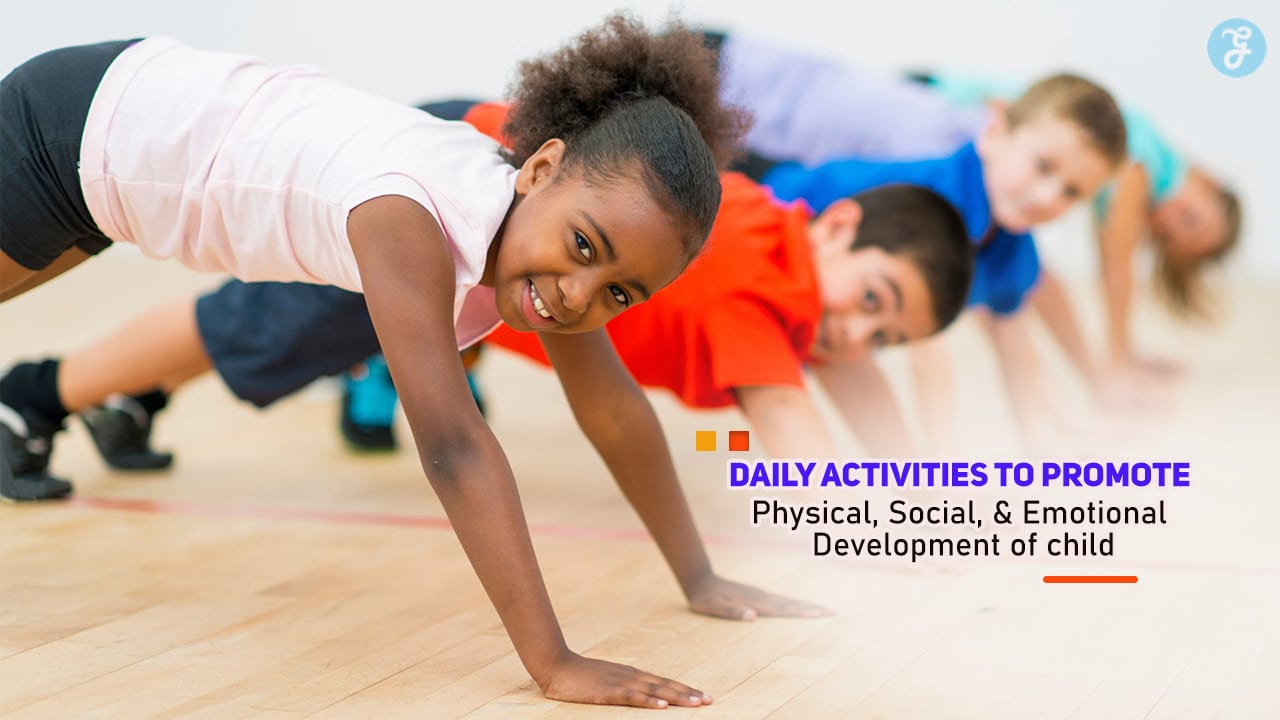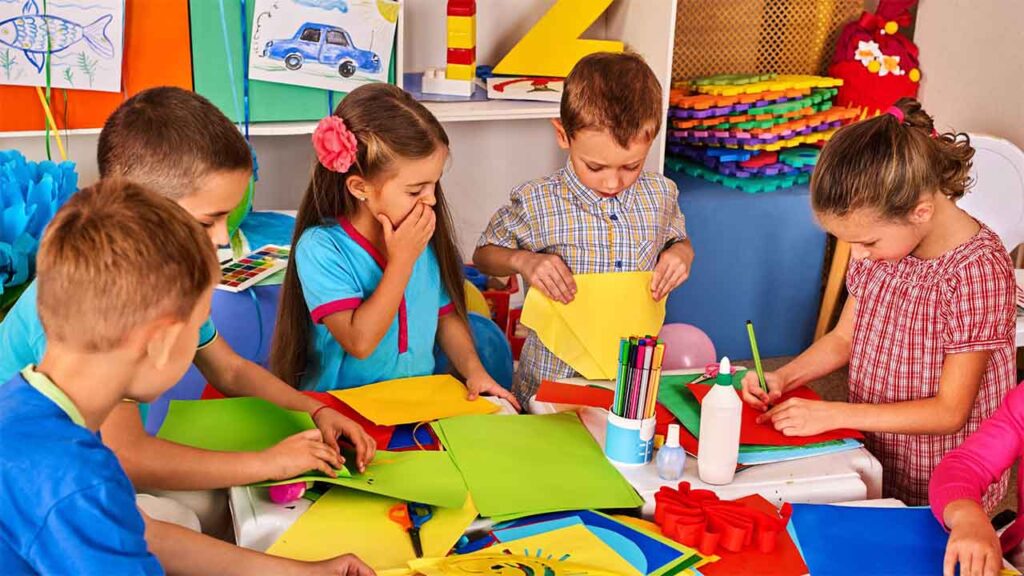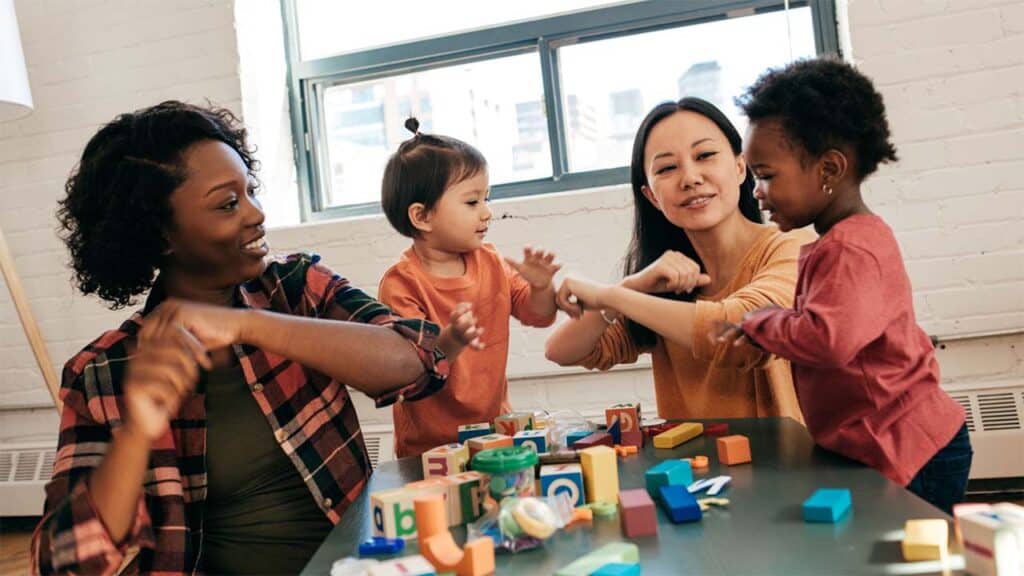Child development is a multifaceted process that includes physical growth, social interaction, and emotional well-being.
The early years of a child’s life are the most crucial for their overall development, as they learn how to move, interact with others, and understand their feelings.
As parents and caregivers, it’s essential to support children with activities that foster well-rounded growth in these areas.
In this guide, we will explore 10 daily activities that promote the physical, social, and emotional development of children.
Each activity is designed to engage kids in meaningful, age-appropriate ways, helping them to build essential life skills while having fun.
1. Outdoor Play for Physical Development
Outdoor play is a vital component of a child’s physical development.
Activities like running, jumping, climbing, and balancing help strengthen muscles, improve coordination, and enhance motor skills.
Children also benefit from exposure to nature, which promotes sensory exploration and creativity.
Benefits of Outdoor Play
- Improves Motor Skills: Activities like running, hopping, and cycling improve balance, coordination, and gross motor skills.
- Promotes Physical Health: Regular outdoor activity helps children maintain a healthy weight, strengthens their immune system, and builds endurance.
- Enhances Problem-Solving Skills: Navigating playgrounds and creating games with friends helps children learn to think critically and creatively.
Daily Outdoor Play Activities
- Running Races: Organize a simple race or obstacle course in the yard or park.
- Nature Walks: Explore a nearby park or nature trail and encourage your child to observe different plants, insects, and animals.
- Ball Games: Play catch, soccer, or basketball to promote hand-eye coordination and teamwork.
2. Role-Playing for Social Development
Role-playing games provide a safe environment for children to practice social interactions, improve communication, and develop empathy.
Pretending to be different characters allows kids to explore various perspectives and work through social scenarios.
Benefits of Role-Playing
- Develops Communication Skills: By playing roles like “teacher” or “shopkeeper,” children learn how to communicate effectively and negotiate.
- Encourages Empathy: Pretending to be different people helps children understand others’ feelings and perspectives.
- Promotes Cooperation: Role-playing often involves multiple participants, encouraging cooperation, turn-taking, and teamwork.
Daily Role-Playing Activities
- Pretend Play with Toys: Use dolls, action figures, or stuffed animals to act out stories and scenarios.
- Dress-Up Games: Provide your child with costumes or everyday household items to play different roles, such as a doctor, chef, or firefighter.
- Family Role-Switching: Let your child pretend to be the parent or teacher for a day, guiding conversations or making decisions.
3. Art and Craft for Emotional Expression
Art is a powerful tool for emotional development.
Through drawing, painting, and crafting, children can express their feelings in a non-verbal way, which is especially helpful for younger kids who may not have the vocabulary to describe their emotions.
Benefits of Art and Craft Activities
- Fosters Emotional Expression: Art allows children to express their thoughts, fears, and happiness visually.
- Improves Focus and Patience: Working on art projects helps children practice concentration and patience, as they work through steps to complete a task.
- Builds Self-Esteem: Creating something from scratch gives children a sense of accomplishment, boosting their self-esteem.
Daily Art and Craft Activities
- Drawing and Painting: Give your child paper, crayons, and paints to create their own masterpiece. Encourage them to draw how they’re feeling or something they experienced that day.
- Collage Making: Use old magazines, colored paper, and glue to make a themed collage. For example, create a “happy” collage with pictures that make your child smile.
- Clay Modeling: Allow your child to shape clay or playdough into animals, objects, or abstract forms to encourage tactile exploration.
4. Storytime for Language and Social Development
Reading stories to your child every day helps develop their vocabulary, comprehension, and listening skills.
In addition, discussing stories with your child encourages communication and critical thinking, which are crucial for social development.
Benefits of Storytime
- Expands Vocabulary: Listening to stories introduces children to new words and sentence structures.
- Improves Listening Skills: Sitting still and focusing on a story helps children develop patience and active listening.
- Encourages Imagination: Stories transport children to different worlds, sparking their creativity and sense of wonder.
Daily Storytime Activities
- Bedtime Stories: Read a short story or chapter before bed to help your child wind down while expanding their language skills.
- Interactive Storytelling: Encourage your child to participate in the storytelling process by asking questions or letting them finish parts of the story.
- Make-Your-Own Story: Create a story together, with your child providing ideas for the characters, setting, and plot.
5. Group Play for Social Development
Group play provides children with opportunities to develop essential social skills such as sharing, turn-taking, cooperation, and conflict resolution.
Whether playing with siblings, friends, or classmates, group activities are key to fostering teamwork and friendship.
Benefits of Group Play
- Builds Teamwork Skills: Group activities teach children how to collaborate and work towards a common goal.
- Teaches Conflict Resolution: When disagreements arise, children learn how to negotiate and resolve conflicts.
- Encourages Empathy: Playing with others allows children to see different perspectives and practice understanding others’ feelings.
Daily Group Play Activities
- Board Games: Play simple board games that require turn-taking, cooperation, and strategy.
- Building Blocks or Puzzles: Work together to build a structure or solve a puzzle, emphasizing teamwork and communication.
- Team Sports: Organize a game of soccer, basketball, or tag to encourage active play and social interaction.
6. Music and Dance for Physical and Emotional Development
Music and dance are excellent ways to promote physical coordination, rhythm, and emotional expression.
Dancing to music not only helps children develop motor skills but also allows them to express their emotions through movement.
Benefits of Music and Dance
- Enhances Coordination: Moving to the rhythm of music helps children improve balance, coordination, and motor skills.
- Encourages Emotional Expression: Dancing and singing allow children to express their feelings in a fun and creative way.
- Boosts Confidence: Performing in front of others, even in informal settings, builds self-confidence.
Daily Music and Dance Activities
- Dance Party: Play your child’s favorite songs and encourage them to dance around the living room, letting them move freely to the beat.
- Musical Instruments: Give your child simple instruments like a tambourine, drum, or maracas to play along with music.
- Sing-Alongs: Sing nursery rhymes, children’s songs, or their favorite tunes together, encouraging them to follow along or create their own lyrics.
7. Gardening for Physical and Emotional Growth
Gardening offers a wonderful way for children to engage with nature, develop patience, and learn responsibility.
Caring for plants helps children build a sense of accomplishment while promoting physical activity through digging, planting, and watering.
Benefits of Gardening
- Promotes Responsibility: Caring for plants teaches children the importance of nurturing and responsibility.
- Enhances Sensory Exploration: Gardening allows children to explore different textures, smells, and colors in nature.
- Encourages Patience: Watching plants grow over time helps children develop patience and an understanding of natural processes.
Daily Gardening Activities
- Planting Seeds: Help your child plant seeds in a small garden or pots, teaching them how to water and care for the plants.
- Watering Plants: Let your child take charge of watering the plants each day, helping them understand the importance of routine care.
- Exploring Insects: Encourage your child to observe insects in the garden, teaching them about the ecosystem and how different creatures contribute to plant growth.
8. Puzzle Solving for Cognitive and Emotional Development
Puzzles challenge children to think critically, develop patience, and work through problems in a step-by-step manner.
Whether it’s a jigsaw puzzle, a brain teaser, or a simple maze, puzzles are great for fostering cognitive development and emotional resilience.
Benefits of Puzzle Solving
- Improves Problem-Solving Skills: Puzzles encourage children to think critically and find solutions to challenges.
- Enhances Focus and Concentration: Completing a puzzle requires concentration and attention to detail, skills that are valuable in school and everyday life.
- Builds Emotional Resilience: Working through a puzzle teaches children patience and perseverance, especially when faced with difficult challenges.
Daily Puzzle Activities
- Jigsaw Puzzles: Start with simple puzzles for younger children, gradually increasing the difficulty as they master each level.
- Word Puzzles: Introduce word searches or crossword puzzles for older children to improve language skills and cognitive development.
- Maze Games: Print or draw simple mazes and have your child navigate their way through them, boosting their spatial awareness and problem-solving abilities.
9. Cooking Together for Social and Cognitive Skills
Cooking with your child is an excellent way to teach important life skills while also promoting social bonding and cognitive development.
Measuring ingredients, following recipes, and working together in the kitchen can be both educational and fun.
Benefits of Cooking Together
- Enhances Math Skills: Measuring ingredients introduces children to basic math concepts like counting, fractions, and proportions.
- Promotes Teamwork: Cooking together fosters cooperation as children and adults work together to prepare a meal.
- Builds Responsibility: Children learn responsibility by helping with meal preparation, cleanup, and understanding food safety.
Daily Cooking Activities
- Simple Recipes: Start with easy recipes that your child can help with, such as making sandwiches, salads, or baking cookies.
- Measuring Ingredients: Teach your child how to measure ingredients, explaining the different units of measurement.
- Kitchen Safety: As you cook, explain the importance of safety in the kitchen, such as being careful around hot surfaces and using utensils properly.
10. Yoga for Physical, Emotional, and Social Well-Being
Yoga is an excellent way to combine physical activity with mindfulness, helping children improve flexibility, balance, and emotional regulation.
Practicing yoga regularly can also help children build social awareness by participating in group classes or practicing alongside family members.
Benefits of Yoga
- Improves Flexibility and Balance: Yoga poses help children develop strength, balance, and flexibility in a fun, engaging way.
- Encourages Emotional Regulation: Breathing exercises and mindfulness techniques teach children how to calm themselves and manage stress.
- Promotes Social Interaction: Group yoga classes offer an opportunity for social interaction and learning in a collaborative environment.
Daily Yoga Activities
- Simple Poses: Teach your child basic yoga poses like Downward Dog, Tree Pose, or Cat-Cow, encouraging them to hold each pose for a few seconds.
- Breathing Exercises: Incorporate simple breathing exercises into your child’s routine to help them relax and focus.
- Yoga Storytime: Combine storytelling with yoga by creating a narrative around different poses (e.g., pretending to be animals or trees).
Conclusion: Nurturing Well-Rounded Development
These 10 daily activities offer a holistic approach to fostering a child’s physical, social, and emotional growth.
By incorporating outdoor play, role-playing, creative expression, and problem-solving into your child’s daily routine, you provide a balanced environment where they can thrive.
Whether your child is just starting preschool or entering elementary school, these activities can be adapted to meet their developmental needs, helping them grow into happy, healthy, and well-rounded individuals.






































